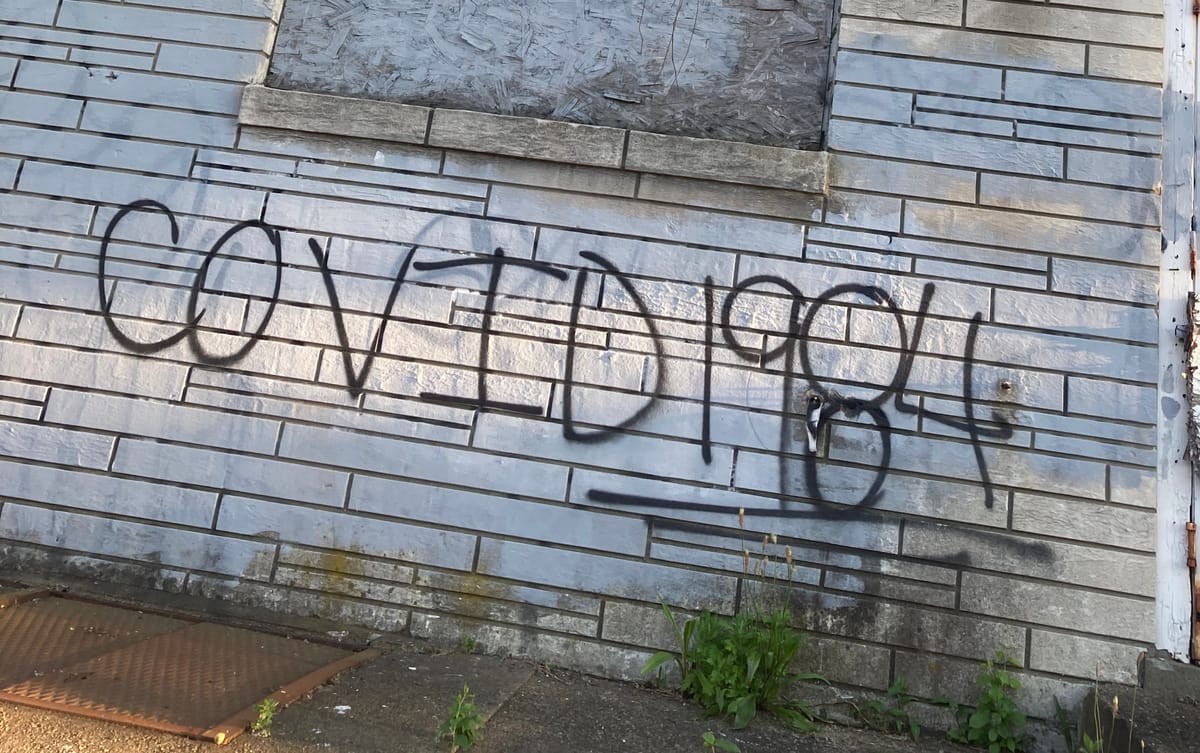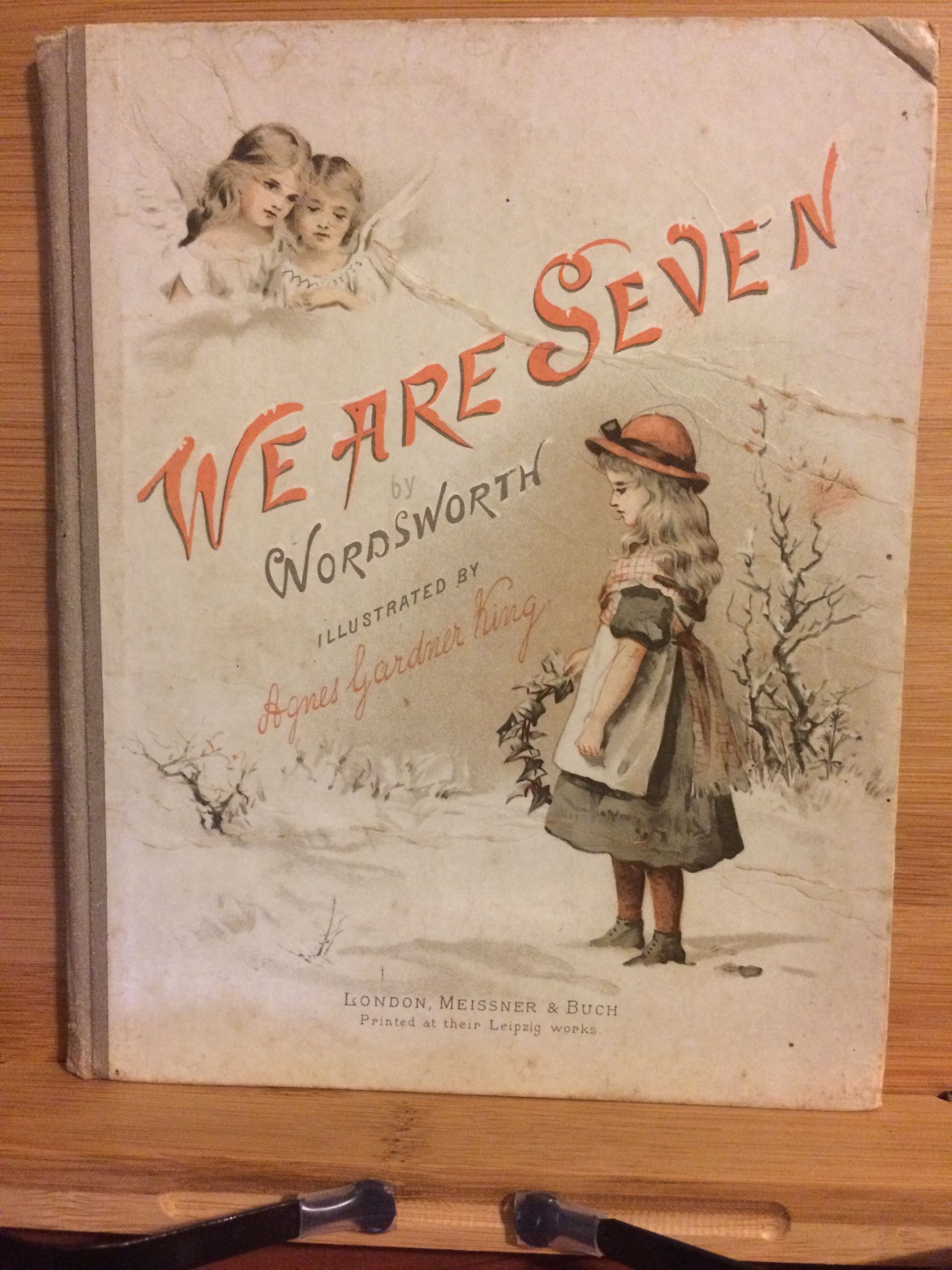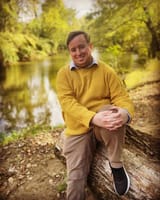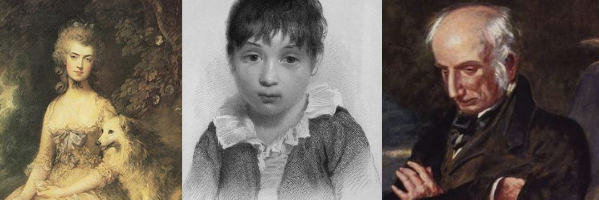Writing of/for the Future

I wrote about three things this past month:
- A strain in Samuel Taylor Coleridge's poetry of concern toward the upbringing and mental life of future generations. ("A Love of Future Existence")
- A celebration of Bloomsday, focusing on James Joyce's vision of love and rebirth across generations, as we draw endlessly on the model of Eve and Adam. ("Always Again Another Bloomsday")
- Reworking our model of "cancel culture" around the image of suspension, drawing on the fiction of Zadie Smith and Evan Harris, with particular concern for the model of eternal damnation directed at children as early as middle school. ("On Suspension Considered as one of the Fine Arts")
I did not intend this from the outset as a theme, but a recurring focus of all three has been a consideration for future generations. In thinking not about only literature of the past and present, but imagining the literature yet to come, this project is necessarily future-oriented. I touched on the trouble of this in my late May post, "The Internet Is Already Gone – Now What?" As I discuss in more depth there, an increasing challenge of writing about even near-future is that you need to reasonably imagine what the new Gen A and Gen B will be like, how they will think, what they will feel, etc.:
There is already a mass ignorance of the particular experience of Gen Z, and an even more horrific lack of awareness of what exactly an entire life of mass surveillance – at home, in school, on the street – will do to Gen Alpha. What of the generation after that?
Or as I write in more specific terms in my "Suspension" post:
The post – from a child, made through the unthinking quickness of modern apps, and distributed to a private selection of friends under the expectation of ephemerality – is taken as a threat of violence rooted in hatred. The situation is complicated, with no historical precedent for understanding how a young teen developing social awareness is to understand something like Snapchat, which is only newly technologically possible; nevertheless, a policy of "zero tolerance" means there is no room to think through such matters.
My guiding belief in writing that post, and in my scholarly work more broadly, is that our literary models are not idle entertainment. Our ability to read and write literary texts fitting for various elements of the digital age reflect how deeply or little we truly understand those elements. Whether through heavy use of computers or in other experience frequently mediated through digital technology, most people are way more immersed in this world than the average character of contemporary fiction, and have been for over a decade.
Why is it so much easier to narrate the largely banal experience of walking around a local park for the 200th time than it is to narrate a distinctive, possibly even formative online experience? We have literary models of walking around physical space, encountering nature, retreading the familiar, navigating a highly-populated urban space. We have far fewer models for online experiences, and our means of referencing this casually are full of old metaphors (navigating cyberspace, surfing the web). Many people continue to understand surveillance, media manipulation, totalitarianism, and so on entirely through the language and imagery of George Orwell's 1984. This past month, that novel turned 71 years old. Orwell's literary formulations of those topics remains insightful, but falls short of capturing some of the more precise developments which have occurred in recent decades. Expanding our network of literary knowledge and grappling seriously with more recent works allows us to enhance our perceptual frame.
Metaphors are formed, culturally solidified, and reworked through the arts. In 1973, the popularity of Westerns got a science-fiction twist through Westworld, a film about a cyborg cowboy amusement park gone wrong. In July of 1982, William Gibson coined the term "cyberspace" in his short story "Burning Chrome." To make a compelling narrative about this imagined space, however, Gibson structures his story of two hackers around an already established heist narrative framework. They are, accordingly, referred to frequently as "computer cowboys" and variations thereof. Later that year, "Computer Cowboy" is a song on Neil Young's album Trans. These images are part of the cultural foundation for imagining the computer world as the "electronic frontier." That term is not often used anymore, but the image of a "Wild West" Internet still is used by both those who support that sense of freedom and those who seek to make the space less wild.
This is, however, an old metaphor. We need more models which cover more recent developments, and which can give a framework through which to discuss the world in which younger generations are growing up. With the current push toward rapidly increased distanced socialization, remote education, working from home, electronic commerce, and so on, the precise character of this world is perhaps coming into clearer focus. How hyperconnected will literature of this time be, on average? Or will it tend to look more like a Victorian novel, with masks? In "The Lag: Technology and Fiction in the Twentieth Century" (PMLA, January 2020), Alexander Manshel cites a letter from the author J. M. Coetzee in which he writes, "The telephone is about as far as I will go in a book, and then reluctantly." Even such skilled authors struggle with writing of our current reality, but when it comes to expelling a student for a joke on social media, school administrators who have never even seen the interface for the platform assume they understand the student's perspective perfectly well.
One of the texts I discussed in "The Internet Is Already Gone" is Tim Maughan's 2019 novel Infinite Detail. Maughan imagines a series of coordinated attacks wipe out the global Internet, allowing a turn toward more localized connections. In more mainstream literary news, it was announced just last week that Don DeLillo has a new novel coming out this October, The Silence. As described by its publisher, the premise of the novel is that "an unknown catastrophic event renders the digital world silent," bringing about "echoes of the sudden, isolating effects of the Coronavirus." It sounds very similar, but don't mind that. The premise of my post was that 2019 already saw the same literary formulation twice. DeLillo's new work will continue to imagine a digital silence for the reasons I discuss. Let's just hope he offers us some of the literary perspective we so desperately need right now. Look forward to that in my November 2020 newsletter.
New Literature: A room of one's kid's own
Elvia Wilk published a short story in five parts in n+1 on June 19. The five parts are united through a recurring focus on imagining advancements in augmentation technology. "My Kid Could Do That" incorporates a keynote on how augments trouble our ideas of art, an essay from a person who used augments to quickly learn how to ride horses, a Reddit thread of the poster asking if he is the asshole for not telling his girlfriend that he has two augments, an art essay on how augments impact our sense of outsider art, and a corporate memo encouraging workers to get job-related augmentations. Collectively, these give a sampling of fictional attitudes toward human augments giving content knowledge, muscle memory, and "instantiated decision-making."
As my overview should make clear, there is a special concern toward art. Even the corporate memo is from within the context of a graphics design company. The story questions what becomes of
- creative genius and the high art market?
- aesthetic categories of insider and outsider when anyone (with a large amount of spare money) can learn to replicate any existing visual work?
- the commercial art market?
But we also see the impact of the technology on hobbies ("a new capacity for joy every day") and relationships ("AITA for not telling my girlfriend I have 2x augments?" Wilk centers the artistic concerns, but keeps that world of artistic production in conversation with other elements of life. The consistent trajectory of these sections is toward short-term justifications from various perspectives.
The long-term vision is that of course those who can afford to augment will excel, reinforcing the same old outside. The more you can augment ("2x augments" is better than one), the better off you will be. To what extent, though, is an individual actually creative and unique? In looking to the future, the dismissal "my kid could do that" is the usual dismissal (reworked as "a non-augmented human could do that"), but also an aspiration of upward mobility. In the fiction and now, it is clear that money is required to pursue at length all of these things.
This story imagines technological advancement not as a source of radical change, but a stress test. A good companion to this would be Virginia Woolf's "A Room of One's Own," which deals with the idea of creating figurative space for women within a male-dominated tradition, but also touches on the disparity in material freedom to sit and create at length. As our technology adds stress as well as new opportunities to existing systems, how do we understand the possibility of a creative outside just waiting for the ability to emerge?
Classic Literature: The little maid would have her Will Wordsworth poem
Last week, I bought myself this copy of William Wordsworth's poem "We Are Seven" with illustrations by Agnes Gardner King:

In Wordsworth's "We Are Seven," the speaker – on a walk through the countryside – encounters a young girl, and intrigued by her "rustic, woodland air," inquires about her life. The title refers to a disagreement between the speaker and child. The latter insists that she and her siblings total seven in all, while the former insists that since two of her siblings are dead, they are only five.
The speaker fundamentally does not get the child's perspective that her two dead siblings are still essentially with her, while not blinking at her also equally counting two who are out at sea. Since this is pre-communication technology, those two are deeply disconnected. As we see in The Odyssey, if you're out at sea like that, you exist to those at home purely on faith.

There is a theological gap between the speaker and the child, but also philosophical. He does not get her relationship to place. She explains, "Their graves are green, they may be seen," and discusses how she goes and plays near them on the hillside, and sings to their graves. Though the speaker is somewhat of a Wordsworthian figure, one of the really great dramatic effects of Wordsworth's poetry here is that it is the little girl, not the actual speaker of the poem, who holds the poetic spirit, and gives a substantial language of feeling. The speaker feels as though he is "throwing words away" in talking to her, while disregarding her insight. Wordsworth even gives the title from her perspective: "We Are Seven."
Please give this relatively short poem a read of your own.
Electronic Literature: Idiosyncratic poem games
A relative classic, Jason Nelson's 2007 Game, game, game and again game was featured in the second Electronic Literature Collection in 2011. In his statement for that collection, Nelson describes the work as "a digital poem, retro-game, an anti-design statement and a personal exploration of the artist's changing worldview lens." In rejecting what he sees as a tendency toward clean design in other digital media, Nelson creates this hand-drawn, chaotic world.

The childish style of the visuals are not just an aesthetic statement, however. They are thematically relevant to the work. Nelson's focus is on foundational beliefs and experiences he has encountered from childhood. Different levels explore religion, capitalism, pharmaceuticals, and so on. The visual and auditory experience of navigating these is made highly obnoxious.
As we progress, we are rewarded in each level with a flashing pop-up style ad that we can click for "video proof." These add in a short clip from old home videos. They give a sense of realness to the wildly flashing text of the page, but are short enough to remain mostly cryptic. They show he is a real person with a past, and our classic means of recording and viewing that past is far different from the surrounding new media world. This creative digital space allows for the unrestrained overflow of childish scribbling, while also showing how obnoxiously the messages of these fundamental systems can announce themselves to a child's perspective.
In actively playing through the work, we experience the way we develop beliefs in life. Through multiple attempts, and failures, we learn what to do and what not to do. Because the work's design is so haphazard, it is not always clear what each of those might be, but if you're wrong, you just get blasted with overly loud, unpolished audio.

On this page, covering the idea of capitalist growth, you work your way up a staircase, then jump down and loop back toward the bottom of the staircase. The second passage seems perhaps drawn from personal memory ("tight lining, the railing between balconies, grip smoothed paint," etc.), but most of the text leans more toward critical rather than personal: "the boxes we buy, objects all shorn, husked from the artificial and metallic, shine, shine from volcanic, beneath us is formed above us." Accompanying this is a video of a Christmas tree, many presents strewn under, and a comment about playing piano largely obscured by the overlapping sounds which permeate the work. We see accumulation of material goods, but then: health, death, life insurance.
Some of that writing veers into a more adult perspective, but the formative moments are still in childhood. If you play through this, let me know what you think. How well do Nelson's experiments hold up today, thirteen years on?
Literary Study: "Literature and Hyperconnectivity" coming soon
I will be sending out a free e-mail-based mini-course to those on my mailing list, soon. The design will be similar to the short introductory remarks above, and so requires no advance reading, but my intention is that the course should enhance your reading if you do read through the referenced texts. Either way, it should introduce you to some interesting ideas regarding literature's relation to hyperconnectivity, with a concise study of a selection of concrete literary examples.
I will be sending out a syllabus in the coming days, and then start sending out the actual content over the next several weeks. For now, enjoy this preview:

Around the Web
Where the City Can't See film teaser (directed by Liam Young, screenplay by Tim Maughan)
The computer vision systems of driverless cars google maps, urban management systems and CCTV surveillance are now fundamentally reshaping urban experience and the cultures of our city. Set in the Chinese owned and controlled Detroit Economic Zone (DEZ) and shot using the same scanning technologies used in autonomous vehicles, we see this near future city through the eyes of the robots that manage it.
"'Karen' and the Maenads" (Geoff Shullenberger)
In this way, due to her ambiguous symbolic position in the collective imagination, she is best positioned to embody the dissolution of boundaries and distinctions. The recorders and viewers of these videos, like Pentheus, can’t help but be transfixed by the threat to public order they see.
"Narrative Collapse" & "Narrative Collapse: An Addendum" (L. M. Sacasas)
In short, it would appear that our basic sense-making technology, the narrative, is a bit glitchy, both failing to operate as we might expect and causing some issues of its own.
This post was distributed as my second monthly newsletter. If you want to see more content like this each month, subscribe below for free. Sign up now and I will also be sending out the course described above via email soon:





